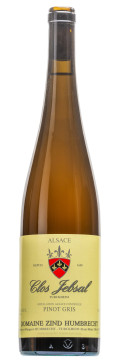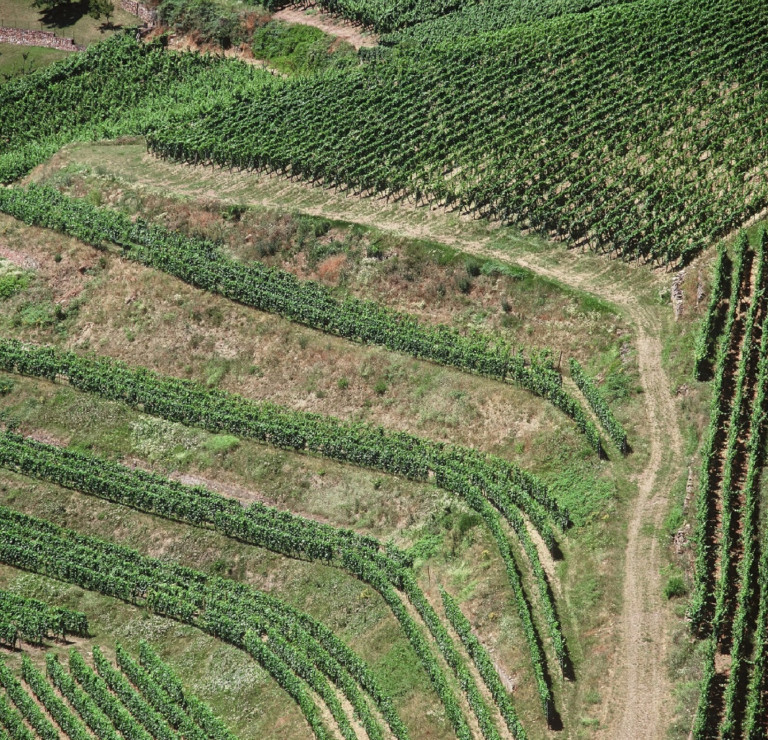
Technical presentation
| Bottling : | January 2022 |
|---|---|
| Acquired alcohol : | 13° |
| Residual sugar : | 7 g/l |
| Total acidity : | 3.3 g/l H2SO4 (5.1 g/l Acide Tartrique) |
| pH : | 3.2 |
| Yield : | 35 hl/ha |
| Optimum tasting : | 2025-2035+ |
| Average age of vines : | Vineyard planted in 1983 |
| Terroir : | Clos Jebsal |
| Sweetness index : | 1 |
| Available for sale : | Yes |
| Soil : | Grey marls and gypsum (Keuper), South facing, Very steep slope |
Description of the wine Pinot Gris Clos Jebsal 2020
The Clos Jebsal is located just below the Grand Cru Brand, separated by an impressive geological fault line which very precisely delimits the granite (primary era) of the Brand and the gypsum marls of the Keuper (secondary era). This small Clos of 1.3ha was reconstituted by my father Léonard in the late 70s, then replanted in 1983 in Pinot-Gris. Facing south, on a very steep slope, the grapes ripen quickly. The marl soil is deep and cold on the bottom of the Clos and on the terraces, and, on the other hand, the limestone outcrops more on the upper part. 2020 marks an important turning point in the style of wines produced on Jebsal. The contrast between a very sunny exposure and a deep marly soil allowed the development of noble rot very regularly. We have produced the richest Grains Nobles wines on this terroir. However, climate change is now responsible for advancing the ripening period. A development of noble rot in a warmer climate is not favourable to the preservation of acidity and above all, botrytis takes on a completely different aspect, much less noble. We have experienced more and more difficulties in producing this type of wine over the last 10 years. So, in 2020, a very early year, we made the decision to harvest these grapes before botrytis develops. 2020 will therefore have produced the driest Jebsal in its history and this style is set to last! The end of great sweet wines in Alsace? No, but late years will be increasingly rare in the future !

Tasting notes
01/2022 : Bright pale yellow colour. The deep blue marls of the Jebsal produce austere wines in their youth, the nose is also today marked by the long aging on lees, slightly reductive. A thorough aeration will release a nice ripe and subtle fruitiness. The mouth is ample, rich, and we find the influence of clay on the wide and silky aspect of the palate. The mouthfeel is delicate and without heaviness, the wine lengthens in the finish with a nice bitterness which also brings a toasted aromas. An impressive wine for a vineyard that always produced sweet wines, until now !

The Clos Jebsal of Turckheim
The wines from Clos Jebsal are discreet in their youth, often marked with flinty or smoky aromas. The expression of fruit linked to the concentration by botrytis is coaxed out with some time in bottle